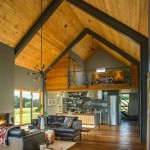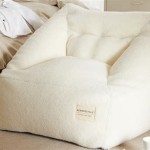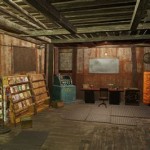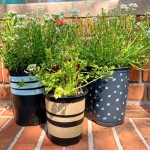Blush Pink Nursery Wall Decor: Creating a Serene and Charming Space
The nursery is a sanctuary, a space meticulously designed to nurture and comfort a newborn. Among the many design choices parents undertake, wall decor plays a pivotal role in establishing the desired atmosphere. Blush pink, with its gentle and calming characteristics, has emerged as a popular and versatile choice for nursery walls. This article explores the diverse options and considerations for incorporating blush pink into nursery wall decor, providing a comprehensive guide to creating a serene and charming environment for the infant.
Understanding the Psychology of Blush Pink
Color psychology suggests that certain hues evoke specific emotional responses. Blush pink, a soft and muted shade, is often associated with feelings of tranquility, tenderness, and warmth. These qualities make it particularly well-suited for a nursery, as they contribute to a soothing and comfortable environment conducive to rest and relaxation. Unlike more stimulating colors, blush pink creates a sense of calm, which can be beneficial for both infants and parents. It also presents a visually appealing backdrop for the introduction of other colors and decorative elements.
Choosing the Right Shade of Blush Pink
The term "blush pink" encompasses a spectrum of shades, each possessing distinct characteristics. Careful consideration must be given to selecting the right shade to achieve the desired aesthetic. Lighter blush pinks, almost resembling a light beige with pink undertones, create a gentle and airy ambiance. These shades work well in smaller nurseries, as they can make a room feel more spacious. Conversely, blush pinks with a slightly deeper hue convey a sense of warmth and coziness. Consider the natural light available in the nursery. Rooms with ample sunlight can accommodate slightly richer pinks, while rooms with limited light may benefit from lighter shades to maximize brightness.
Wall Paint Options and Considerations
When it comes to applying blush pink to nursery walls, paint is generally the primary choice. Several factors should be considered when selecting the paint. First and foremost, prioritize low-VOC (Volatile Organic Compounds) paints. VOCs can release gases that may be harmful to infants. Look for paints specifically labeled as "low-VOC" or "no-VOC". Consider finish options; matte or eggshell finishes present a softer, more diffused look, which aligns well with the calming aesthetic of a nursery. Glossier finishes, while more durable, can reflect more light and may appear less serene. Durability is an important facet to consider particularly in the nursery, as the walls are likely to get dirty with the passage of time. Ensure the paint is washable for ease of cleaning.
Beyond Paint: Wallpaper, Murals, and Decals
While paint is the most common and versatile approach, alternative options exist for incorporating blush pink into nursery wall decor. Wallpaper offers a variety of patterns and textures, enabling the creation of a more visually dynamic space. Consider subtle patterns such as polka dots, stripes, or floral motifs in blush pink. Murals, whether painted directly onto the wall or applied as large-scale decals, present an opportunity to introduce more elaborate imagery. Decals offer a flexible and removable approach to adding visual interest. They are particularly suitable for renters or those who prefer the option to change the decor easily. Decals come in various shapes, sizes, and designs, allowing parents to customize the nursery to their preferences. Consider the scale and placement of the wall decor elements carefully.
Incorporating Blush Pink with Other Colors and Patterns
Blush pink is a highly versatile color that pairs well with a wide range of other hues. White and gray are classic companions, creating a clean and minimalist aesthetic. Introducing accents of gold or brass can add a touch of sophistication and warmth. Soft blues and greens complement blush pink, creating a harmonious and nature-inspired feel. Furthermore, the use of patterns opens up further design possibilities. Textural elements are a way to make the room feel more engaging and inviting, therefore consider using materials such as wood, woven baskets, and soft textiles to complement the color scheme. When combining blush pink with other colors and patterns, balance is key. A common strategy is to use blush pink as the primary color, with other colors employed as accents. The selection and positioning of these accent colors and patterns should align with the overall desired aesthetic.
Accessorizing the Blush Pink Nursery
Once the walls have been decorated, accessories play a crucial role in completing the look and feel of the nursery. Soft textiles, such as blankets, curtains, and rugs, in blush pink or coordinating colors, are essential for adding warmth and comfort. Consider incorporating elements that add functionality and visual interest. Wall shelves can display books, toys, and decorative items. Artwork, such as framed prints or paintings, can add personality and visual depth. Lighting fixtures, such as a soft nightlight and a dimmable overhead light, can help to create ambiance and facilitate nighttime feedings and diaper changes. Mirror are an excellent way to make the space appear larger and help the light to bounce off the walls. Carefully selected accessories can transform the nursery into a cohesive and inviting space.

Nursery Wall Decor White Blush Pink Paper Flower Set

Nursery Wall Decor White Blush Pink Paper Flower Set Norway

Elegant Nursery Paper Flowers In Blush Pink And White Flower Wall Decor


Nursery Paper Flowers Blush Pink Decor

Pink Fl Personalised Nursery Wall Art Girl Decor

4 Boho Elephant Wall Art Print Blush Pink Cream Baby Girl Nursery Name Forest Cafe

Blush Pink Nursery Paper Flowers Wall Decor Baby Girl Room Singapore

Elephant Baby Girl Fl Nursery Wall Art Blush Pink C Flowers Wi Sweet Blooms Decor

Blush Pink Letter A Nursery Name Wall Art Zazzle







